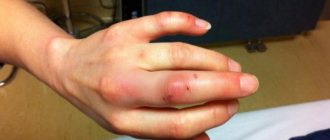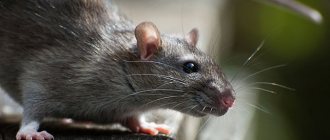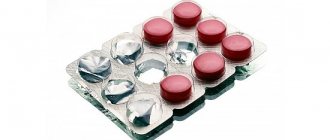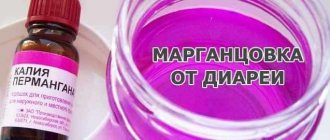Any stay in nature, be it a hike, a barbecue picnic, fishing or mushroom hunting, can be overshadowed by the presence of endlessly buzzing and biting small midges - midges. Midges, circling in a cloud near a person, are constantly looking for a victim, and midge bites are not so harmless. After an insect bite, swelling and swelling appears, which not only itches a lot, but can also lead to unpredictable consequences. In addition, swelling from a midge bite can last for several days, and marks on the skin sometimes remain for 2-3 weeks.
What is a midge?
Midges belong to the family of dipterous insects such as flies and mosquitoes, and are included in the group of midges as well as horseflies and gadflies. Only females bite, gnawing off a piece of skin. It produces saliva as an anesthetic (pain reliever), so you initially don’t feel the bite. Saliva also prevents blood clotting, which makes it possible for the midge to calmly lick the blood. It is also saliva that causes itching, swelling and allergies, because it contains protein. And itching and swelling are nothing more than the body’s reaction to a foreign body.
"Loratadine" or "Cetirizine"
If there is swelling of the eyes after a midge bite, it is best to treat with systemic antihistamines. The most effective drug in this regard is Loratadine. According to the instructions, this medicine has antipruritic, antiallergic and antiexudative effects.
Also, oral administration of Loratadine helps reduce capillary permeability, prevent the development of tissue edema and reduce increased contractile activity of smooth muscles. However, before taking the tablets, you should definitely read the instructions, in particular, the contraindications section. This medicine should not be used by children under two years of age, women during lactation and pregnancy, or those with high sensitivity to the main substance.
As for the drug "Cetirizine", it is an analogue of "Loratadine". It is also a histamine H1 receptor blocker, but only the third generation. This drug can quickly suppress the development (including early) of an allergic reaction and reduce the migration of eosinophils, as well as limit the release of mediators at a later stage of allergy.
The drug "Cetirizine" has practically no antiserotonin and anticholinergic effects. In addition, in therapeutic doses it does not cause sedation.
How to protect yourself from midge bites
You need to know that the midge has its own daily routine; it is very active on a warm sunny day in the morning and evening before sunset, and also before rain. Twilight and at night she is passive. It lives mainly in places of tall grass, trees and near water bodies.
- When going for a walk, wear thick clothes with long sleeves.
- When going fishing, hunting and mushrooms, take mosquito nets and mosquito nets.
- Various fumigators will help in the apartment.
- Various chemical repellents (insect repellents) in the form of spirals, tablets and scented candles work well outdoors.
- Your best assistant is pharmaceutical products in the form of sprays, ointments, and balms. Available for both adults and children.
Home remedies: midges, like many insects, cannot tolerate strong odors. For example, clove oils or old clove cologne. Vanillin (crystallized) is diluted with water and used as a spray; it can be used to treat both clothes and a child’s stroller. When getting ready for an overnight stay, you can sprinkle vanilla on your clothes.
"Levomekol"
We found out above how to relieve swelling from a midge bite. However, this information is not enough to avoid all possible consequences from an insect attack. The fact is that very often midges bite small children, who, at the first itch, begin to actively scratch the affected area. To prevent infection of the wound, as well as speed up the healing process, experts recommend using a local remedy such as Levomekol.
The mentioned drug is a combined local medication. It not only has an antimicrobial and dehydrating (that is, anti-inflammatory) effect, but also exhibits high activity against such gram-negative and gram-positive microorganisms as staphylococcus, Escherichia coli and Pseudomonas aeruginosa.
Levomekol ointment quite easily penetrates deep into tissues and stimulates regeneration processes. At the same time, the active substance of the drug does not damage biological membranes.
In the presence of necrotic masses and pus, the antibacterial properties of the local remedy are completely preserved.
Symptoms of a midge bite
Each person is individual and the bite manifests itself differently; itching, swelling, swelling can appear immediately or after a few hours. Here are the main signs of a bite:
- A punctate wound at the site of the bite.
- Burning and itching.
- Blister or swelling.
- Development of allergies.
- Increased blood pressure.
- Strangulation.
Interesting fact: Females of all types of midges feed exclusively on the blood of animals, males feed only on the nectar of flower plants.
Hydrocortisone ointment
In most cases, treatment of a midge bite in the eye with swelling is carried out using hydrocortisone ointment. This is a 1% drug for external use, which goes on sale in 10 g tubes. The main active component of this product is a semi-synthetic glucocorticosteroid - hydrocortisone acetate.
After applying the ointment to the damaged area of the skin, hydrocortisone begins to inhibit the process of releasing biological substances from blood cells, which are responsible for the development of allergic and inflammatory processes (cytokines and prostaglandins). Thus, under the influence of the mentioned component, the migration of lymphocytes and leukocytes to the affected area slows down, and cellular inflammatory infiltrates are eliminated.
So what to do if a midge bites you in the eye? How to relieve swelling on the face? Hydrocortisone has been used with great success in such conditions. Even a short course of treatment helps to quickly improve the victim’s condition. It should be remembered that this drug should not be used for a long time.
What to do if bitten by a midge
To reduce the consequences of a bite such as itching, swelling and allergies, a number of measures should be taken:
- We wash the skin area with clean running water, or with laundry soap.
- Dry the bite area without rubbing.
- Apply pressure to the bite site with your fingers, or if a large tumor develops, apply a compressive bandage.
- Treat with a water- or alcohol-based antiseptic (furacilin, chlorhexidine, decasan); in the field, anything alcohol-based will do.
- Drink painkillers and antiallergic drugs (paracetamol, diazolin, imet).
"Fenistil-gel"
This is a drug for external use. Its active component is dimethindene maleate.
"Fenistil-gel" is capable of providing antipruritic and antiallergic effects. When applied to the skin, it reduces capillary permeability, which is associated with allergic reactions, and also eliminates irritation and itching caused by allergic reactions.
It should also be said that the medicine in question acts as a local anesthetic, has a cooling effect and weak anticholinergic properties.
When used externally, the effect of this product begins after a few minutes and reaches its maximum after 1 to 4 hours.
How to relieve swelling from a midge bite
Both pharmaceutical preparations and home medicine are used to relieve swelling and edema.
- A soda solution (a teaspoon in half a glass of water, a solution of 9% vinegar in a tablespoon in a glass of water, menthol toothpaste or a mouth rinse based on mint or menthol) will help relieve swelling and swelling.
- A cotton swab soaped with laundry soap containing at least 70% fat.
- Wash plantain and dandelion leaves in water, mash until juice appears and apply to the wound, securing with a plaster or bandage. Mint and bird cherry leaves are also suitable.
- Apply onion pulp or a fresh cut of the onion to the wound and fix it. Raw potato gruel helps a lot.
- Cool compresses, a piece of ice, or something cold from the refrigerator will soothe the itching and stop swelling.
- Use antihistamines for any manifestation of allergies (fenistil gel, cynovit cream).
-What is the difference between a cheerful biker and a sad one? -The cheerful biker has mosquitoes on his teeth.
For general swelling
- Administration of antihistamines (tavegil, loratadine, claritin, diazolin).
- Therapy (dexamethasone, hydrocortisone).
- Anti-edema (furosemide, mannitol).
Bites to the neck or face may cause general swelling, which may cause partial suffocation. Such victims need to be provided with access to air and taken to the hospital as quickly as possible.
Treatment with drugs
How to relieve swelling from a midge bite? If, after first aid, a tumor still appears, experts recommend using drugs that can eliminate the main manifestations of allergies. In this case, it is better to use topical medications in the form of gels and ointments. Such funds will act directly on the affected area, which will significantly speed up the recovery process of the victim.
How to relieve swelling from a midge bite? When attacked by many insects, doctors advise using systemic antihistamines.
A midge bit me in the eye, what should I do?
The most unpleasant of the bites is the bite in the eye area. May be accompanied by severe swelling of the eyes, facial tissues, dizziness and shortness of breath. If such bites occur, consult a doctor immediately. If this is not possible, we apply the following measures:
- Apply a cold compress or ice wrapped in a napkin.
- Take an antiallergic drug (Diazolin, Suprastin).
- Sulfacyl drops will help with redness and will have both antibacterial and anti-inflammatory effects.
- Eye ointment (hydrocortisone, dexamethasone)
- Parsley juice and green tea, soak a cotton pad and apply.
- Cut the potato and apply it with the cut pieces, it helps a lot.
Treatment of swelling and itching depending on the complexity of the disease
Multiple bites from midges are distinguished not only by unpleasant symptoms for humans, but also by their rather long-term resistance.
Bite marks, itching, and swelling last to varying degrees in some victims for up to three weeks.
And this is mainly observed when a person does not take any measures to block the development of an allergy to a midge bite.
The approach to treating and eliminating all changes on the skin when an allergic reaction to a midge bite occurs should always be comprehensive and consistent.
If an allergy after a mosquito bite develops according to a typical scenario, then all the changes appear one after another.
First, after a bite, rashes form, then itching and scratching, infection of the wound surface and inflammation of the area of the body with the bite.
The stages of the treatment process must correspond to the nature of changes in the skin:
- Immediately after the bite, the affected area should be washed with plenty of water. And it is best to use regular laundry soap to wash your skin. The skin is dried with a soft cloth, it should not be rubbed, then the bite should be pressed well with your fingers for 3-7 minutes. After pressing, the bite area is treated with one of the currently available antiseptics - Furacilin, Chlorhexedine, Miramistin, or alcohol mixed with water. In case of severe pain, you need to take an anesthetic (Paracetomol, Ibuprofen), and an antihistamine to relieve an allergic reaction.
- For rashes, which usually form on the skin after a few hours, you need to apply soda compresses. A solution for lotions is prepared from a teaspoon of dry soda and a glass of warm water. The rash can be wiped with ammonia. If antihistamines have not yet been used, then at the stage of the appearance of rashes one of them should be taken.
- Itching is eliminated by applying antipruritic external agents to the skin - ointments, gels. You should refrain from scratching the bite site. If it is not possible to immediately apply the ointment, then cover the wound surface with a damp bandage with 0.5% novocaine, a semi-alcohol solution, or furatsilin.
- To prevent the development of inflammation, scratches should be treated with ointments with antiseptic components - Tetracycline, Levomikol, syntomycin emulsion, Oflocaine, Betadine. Lotions with boric acid help prevent further scratching of the skin. According to indications, the doctor at this stage may prescribe ointments with glucocorticosteroids - Sinaflan, Advantan, Hydrocortion.
- If the wound becomes infected, it should be washed daily using a soap solution. After this treatment, 3% peroxide, Decasan, and Chlorhexedine are additionally used. After disinfecting the wound surface, apply a bandage with Levomekol, Levosin, Tetracycline, Oflocaine. If infection is accompanied by fever or increased redness, then antibacterial therapy is required. Azithromycin and Augmentin are usually prescribed for several days.
- When a black scab appears on wounds, surgical treatment is required with thorough cleaning of the wound and removal of pus from it. Antiseptics are also used for rinsing, bandages with antibacterial agents are applied, and the area of skin redness is lubricated with one of the hormonal ointments. The use of antibiotics is mandatory.
- At the wound healing stage, it is necessary to wash it every day using antiseptics. After drying the skin, ointments with regenerating properties are used - Bepanten, Cynovit, Panthenol, Solcoseryl, Actovegin.
POPULAR WITH READERS: Allergic rhinitis symptoms and treatment of seasonal and year-round runny nose
How to treat a midge bite in a child
A child, unlike an adult, will not tolerate itching and pain; he will begin to itch. Our main task is to relieve these symptoms. We rinse and treat the bite site with a soda solution (a teaspoon in half a glass of water). Or mix the soda mixture for 10 minutes.
- Soda lotions or potassium permanganate (weak pink solution).
- Clove oil, star balm.
- Antihistamines such as suprastin or fenistil drops.
- Products based on calendula or arnica.
- Lotions and balms (psilo balm, rescue balm, calamine lotion) can be taken for children under one year of age.
- Valocordin and Corvalol are used to lubricate the bite sites, so they will itch less.
- Tea tree oil.
Contact the pharmacy; manufacturers of children's medicines offer special sprays, pencils and balms for any age.
Biting insects
Tick
How to distinguish:
Identifying a tick bite is not at all difficult. In most cases, they can be easily noticed, because they remain partially under the human skin until they drink enough blood for themselves. In this case, the bite site is quite painful. A tick bite is a painful and incredibly itchy dark red spot. They practically never appear in groups. Symptoms also include difficulty breathing.
A small dark crust may appear on the surface of the rash as the bite heals. They are usually found in folds of skin, in hair, behind the ears, or near areas where clothing fits tightly to the body. But they can be anywhere. If you notice a body fragment tightly embedded in the skin, it is definitely a tick.
First aid:
Ticks can carry serious diseases and cause infections, so if you notice a tick on yourself, go to the hospital and get the necessary tests. The bites go away within 1-3 weeks. It often happens that the tick bites and leaves the body. In this case, you will not need to remove it, however, once you find out the origin of the bites, get tested for diseases.
If you notice a tick bite on your body or have just returned from a picnic in the forest, immediately take a shower with soap - this will help get rid of any remaining ticks. If one or more of them have not left your body, do not try to remove it yourself if you have not encountered this before, because part of its body may remain under the skin and cause an infection. If it is not possible to urgently visit a doctor, pour vegetable or olive oil over the tick. It will begin to suffocate and leave the skin.
Scabies mite
How to distinguish:
Unlike regular mites, scabies mites do not stay under human skin for long. Symptoms usually do not appear immediately, but rather within 4-6 weeks after infection. A red, scaly rash appears on the skin, which is very itchy and scaly. In some places the skin may peel off.
First aid:
If you notice similar symptoms and know that you have a weak immune system, consult a doctor and do not self-medicate under any circumstances. The doctor, in most cases, first prescribes various ointments, creams, lotions and oral medications - this helps get rid of the infection.
For prevention, do not contact people infected with scabies. Periodically deep clean your home and take care of your personal hygiene. If you are confident in your doctor, and a week after starting treatment it seems to you that your symptoms have only worsened, do not be alarmed, this is normal. Continue treatment and you will soon feel relief.
How to protect yourself from bites
Here are some tips to help you:
- Do not use perfume so that the scent does not attract insects
- Choose closed-cut clothing. If it's hot outside, you can choose a suit made of thin cotton fabrics, but with long sleeves
- Apply repellent to exposed areas of the body. In addition to pharmaceutical preparations, the smell of vanillin repels gnats well. It can be dissolved in a bottle of water and periodically sprayed on clothing, a tent, and other surrounding objects. Mint, lavender, and cloves have the same effect. A few drops of essential oil on your skin and clothes will do the trick.
- Take clean water, parsley, baking soda, boric alcohol, and cotton pads with you to nature to disinfect midge bites as quickly as possible
- Stretch mosquito net in tent
Conclusions from Tikhon: Think through every walk, especially if you have a child. Stock up on insect bite repellents. When going on vacation to a pond, take care of antihistamines, supplement them with an antiseptic and a band-aid. It won't take up much space, but it can come in handy.
If you have anything to add, share it in the comments below, perhaps you will help the person make the right decision.
Health to you and your loved ones.
Recommendations
Many bites can be avoided by following safety rules, hygiene, sanitary conditions, and using repellents.
Cleanliness of the home, territory, periodic treatment of premises are important factors for getting rid of household inhabitants - bedbugs, fleas, ticks. Keeping cats and dogs in the house also requires maintaining cleanliness for the health of animals and humans.
Trips to nature are inevitable meetings with the inhabitants of lawns, forests, and coastal areas. Thus, human intrusion into the territory of wasp nests will lead to swarm attacks on uninvited guests. Careful behavior, appropriate clothing, and insect repellents will maintain not only a good mood, but also health.
Tick bites. Doctor's recommendations video
Consequences
In what cases is treatment and relief of swelling from a midge bite contraindicated using traditional methods? It is prohibited to use improvised means after an attack by blood-sucking insects if the victim:
- large affected area (for example, on the entire leg, arm, half of the face);
- a pronounced allergy has arisen (especially in young children);
- body temperature has increased (even slightly);
- blood pressure has increased or, conversely, decreased (especially in elderly patients and people with cardiovascular diseases);
- there is a general pallor of the skin (except for the places where the bite was made);
- enlarged lymph nodes;
- heart rhythm is disturbed;
- severe intoxication of the body occurred;
- severe swelling occurred in the area of the visual organs, including lacrimation and suppuration of the eye.
In such cases, self-medication is undesirable. To prevent unwanted consequences, you should definitely consult a doctor. In serious situations, the victim may need to be hospitalized.
Preventive measures
No one is safe from attacks by blood-sucking insects. Therefore, it is extremely important to protect yourself and young children yourself. To do this, it is undesirable to be near water bodies in the morning and evening, since midges live near them in huge quantities.
If you are in the country, you should get rid of tall grass and weeds, since it is in such vegetation that blood-sucking insects like to live.
If after a midge attack the symptoms of an allergic reaction do not go away (even after using folk remedies and pharmaceutical drugs), then you need to seek medical help. Young children should be monitored especially carefully, since it is difficult for a still immature immune system to cope with a high load.
It is important to know!
What to do if a child is bitten by a midge? How to remove a tumor from a baby?
As is known, reactions to insect bites in young children can manifest themselves much more intensely than in adults. This requires serious treatment, so if there is severe pain and swelling, consultation with a pediatrician is mandatory. After all, only a specialist will be able to prescribe safe medications, taking into account all the children’s characteristics.
It is highly undesirable to treat your baby on your own.
In case of a systemic allergic reaction, which is accompanied by dangerous signs, the child is treated only in a hospital. In this case, the baby may require intravenous infusion of antihistamines and glucocorticosteroids.










